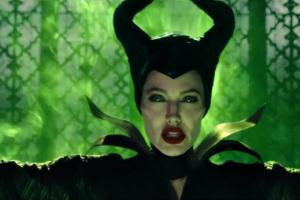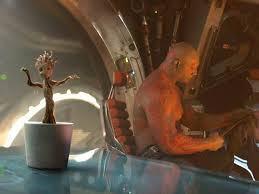The major Hollywood studios do not generally care about small movies anymore. The studios make fewer films than they used to and bet big on would-be blockbusters, fully believing that large investments equal large returns. As Desperately Seeking Susan director Susan Seidelman put it, “To studios now, to make a million dollars isn’t a big deal — you have to make a billion dollars, right? They have to appeal to every demographic in every part of the world, so to make a $20 million movie that makes $60 million, why put their money there?” That is a philosophy which has been inspired by the ever-increasing reliance on international box office, which regularly comprises 70% of a major blockbuster’s global haul. As a result, among the six major studios the cost of making and marketing movies has climbed from $60m per movie in 1997 to $106m in 2007, which is the last year the studios made the information available through the MPAA. Last summer, insiders told The Hollywood Reporter that global prints and advertising costs alone had crept up to as much as $200 million for a blockbuster like Transformers: Age of Extinction. That’s on top of whatever the film’s production budget was.
As such, there is real intrigue to be had from cutting through the smokescreen of box office figures and taking a look at profitability. After all, a studio only takes home approximately 50% of domestic ticket sales, 40% of international ticket sales, and 25% of ticket sales in China (the cut is so low with China because the Chinese government handles almost all of the film marketing within its borders thus saving the studios on print and advertising). So, we already know box office figures are misleading. But how much do studios end up making from home video, PPV, and contracts with cable and broadcast TV? On the other end, how much did it cost them to release a film both in theaters and on home video? Once the grosses came in, how much of it did they have to send straight to a director, actor, or writer as part of a talent participation deal? The only way to know these things is to get a hold of the studio’s official distribution report, but Deadline didn’t want to mess with that. Using what they labeled as “seasoned and trusted sources,” they published their own distribution reports for some of 2014’s biggest films, revealing the studio’s actual net profit after all expenses had been considered. It’s not clear where some of their data comes from, and in some cases they’re obviously speculating considering they estimate home video sales and costs for movies which are still only playing in theaters (e.g., American Sniper). Their prints and advertising costs are also lower than the $175-200m average THR suggested.
That being said, this is the best data that’s out there. Hollywood persists in investing big with aims on even bigger returns. Let’s look at how well that actually worked out for everyone last year. We know that the real profitable movies last year were Annabelle, The Fault in Our Stars, and Ouija, but what about the movies that cost at least $50m to make? For example, Transformers was the highest-grossing film of 2014, but how much did Paramount actually make off of it? I broke it down below, with total revenue including the studio’s share of global box office, global home video, global TV, and merchandise (if applicable), total cost including production budget, global prints and advertising, global home video costs, interest, overhead, and residuals/talent participation, and net profit simply being the result of subtracting the cost from the revenue.
12. Captain America: The Winter Soldier
- Total Revenue: $635.9m
- Total Costs: $469.7m
- Net Profit: $166.2m
- Return on Investment: 35.3%
The Winter Soldier dragged Captain America from being the least mighty of the cinematic Avengers, at least as measured by box office, to pushing well past Thor and becoming the second most bankable member of the team. That was undoubtedly helped by the fact that Winter Soldier was itself a mini-Avengers story, and now the sequel, Civil War, will have an even bigger supporting cast of notables, including Hawkeye, Iron Man, Black Widow, Black Panther, and potentially Spider-Man. You would guess that means their budget is going to balloon due to all of the Avengers actors, but other than Robert Downey, Jr. Marvel’s actors are all locked up for relatively cheap. For example, Winter Soldier grossed $714m worldwide, but after splitting that with theater owners Disney/Marvel only took home $293.7m. That’s for a movie which cost $170m to produce and $143.8m to release and market worldwide. That’s why home video and TV deals are so important because even a movie which seemed like such a slamdunk success as The Winter Soldier technically lost money on ticket sales due to marketing costs. However, because it did sell so many tickets, and it was so dang good it made a killing on home video worldwide ($187m) and negotiated its way to $145.9m in worldwide PPV/VOD and TV (pay, cable, network). Of course, there are also manufacturing and marketing costs that go into putting a movie out on home video and various other fees, though those are all more minimal. Where Marvel really excels is in the deals it negotiates with its talent, with no one in Winter Soldier apparently getting any kind gross participation until the studio reached its breakeven point. After that, $40m was handed over to the likes of Chris Evans, Samuel L. Jackson, Scarlett Johansson, Robert Redford, the Russo brothers, and the screenwriters, leaving Marvel with $166.2m in actual profit.
11. Maleficent
- Total Revenue: $701.8m
- Total Costs: $511m
- Net Profit: $190.7m
- Return on Investment: 37.3%
Maleficent always had a good shot at turning into a hit, but it also carried risk considering its surprisingly high $180m production budget. Few expected it to end the year with a higher worldwide gross than Hunger Games, Captain America, or X-Men, but that’s exactly what happened, with Maleficent’s $758m marking it as the 4th biggest film of 2014. Of course, Disney’s share of that was only $318m after having spent $180m making the movie and $150m releasing and marketing it. But part of the reason that studios spend so much on these movies is they think it is the best way to ensure eye-popping box office figures, and PPV/VOD and TV contracts are negotiated based on some set percentage of whatever the film’s box office gross was. That formula led to $166m in revenue from PPV/VOD and TV for Maleficent to go along with the more than $200m in made on home video worldwide. Angelina Jolie had a big salary and also got a cut of the backend, with Disney handing out $50m to talent participation and $32m in residuals.
10. Guardians of the Galaxy
- Total Revenue: $724.4m
- Total Costs: $520.2m
- Net Profit: $204.2m
- Return on Investment: 39.2%
Boy, was this a gamble that paid off to the tune of a worldwide gross of $774m, third highest of the year. However, Marvel gambled more with Guardians of the Galaxy than we realized. That $170m budget we’ve been told about this whole time is a lie; it actually cost $196m to make, and $147m to release and market, which adds up to $343m. Disney’s share of that impressive global box office was just $338m meaning this is yet another entry on this list which technically lost money in theaters before cleaning up on home video sales ($219m) and PPV/TV deals ($156m) with a little extra from merchandise ($10m). They did have to pay out just over $70m in residuals and talent participation after they hit their breakeven point, with much of that going to the most established stars (more Zoe Saldana, Vin Diesel, Bradley Cooper, not so much Chris Pratt).
9. Divergent
- Total Revenue: $252.8m
- Total Costs: $180.9m
- Net Profit: $71.8m
- Return on Investment: 39.6%
Lionsgate/Summit made Divergent, but they aren’t actually one of the major studios. They’re considered a mini-major and are not set up to distribute any of their films overseas. So, they pre-sell the international distribution rights, mitigating the amount of risk they take on. Divergent cost $85m to make, but L/S had already sold international rights for $65m. That makes this a low-risk, high-reward scenario, but it is still risky. For example, New Line used to be a mini-major which pre-sold foreign distribution. That works when your movie does well both domestically and internationally, like the Lord of the Rings trilogy, but it completely kills you when the movie bombs domestically but not internationally, like The Golden Compass. New Line eventually got so burnt they were forced to merge with Warner Bros. As for Divergent, of its $150.9m domestic gross, $72.4m went back to L/S. That’s after it cost them $50m to release and market the movie. Where they did well was on home video ($68m), having that pre-sold foreign fee ($65m) to subtract from their costs, and giving extremely little back to any of the talent (just $13m in gross participation or residuals). The actual profit they made is by far the lowest on this list, but relative to how much they actually spent their return on investment rivals the likes of Guardians of the Galaxy and Dawn of the Planet of the Apes.
8. Dawn of the Planet of the Apes
- Total Revenue: $615.8m
- Total Costs: $433.6m
- Net Profit: $182.1m
- Return on Investment: 41.9%
Similar to The Winter Soldier, this was a sequel which dwarfed its predecessor, Dawn’s $708m worldwide and $208m domestic grosses clearly superior to Rise of the Planet of the Apes’ $483m worldwide and $177m domestic. That’s a good thing because after the theater owners and China took their piece of the pie Dawn’s $708m worldwide whittled down to a share of $286m for Fox, who devoted $170m to making the film and $142.5m to releasing and marketing it. That meant they were $26m in the hole, which worked itself out through home video and TV. They also proved shrewd negotiators with their talent, handing out just $7.5m in gross participation, although they did have to cough up nearly $30m in residuals.
7. Transformers
- Total Revenue: $843.3m
- Total Costs: $593.2m
- Net Profit: $250.1m
- Return on Investment: 42.1%
If you go by net profit, this is actually the biggest film on this list. That’s what you’d expect for something which made $1.09 billion in worldwide ticket sales, $301m in China alone. Sure, Paramount only got $75m of that money from China, and $412m of the $1.09 billion worldwide gross, but that’s still a ton of money, right? In fact, for the first time on this list that net profit from ticket sales ($412m) is actually more than the studio spent to make ($210m) and release and market ($161.5m) the film. They even show the highest return from merchandise ($30m). It’s just that for a movie with a budget that big the costs do quickly add up, and Paramount gave first-dollar gross deals to Michael Bay and Mark Wahlberg, who combined to take $75m away from Transformers’ bottom line on top of whatever up-front salary they made. On top of that, the studio also had to kick nearly $40m over to residuals.
6. Big Hero 6
- Total Revenue: $626.6m
- Total Costs: $439.3m
- Net Profit: $187.3m
- Return on Investment: 42.6%
Of Big Hero 6’s $664m worldwide gross, Disney walked away with $279.2m. That’s compared to a budget ($165m) and marketing/release costs ($137.5m) which add up to $302.5m, making this yet another which relied on home video.
5. Gone Girl
- Total Revenue: $396.3m
- Total Costs: $266.3m
- Net Profit: $129.9m
- Return on Investment: 48.7%
Of Gone Girl’s $368m worldwide gross, Fox walked away with $163m. That’s compared to a budget ($61m) and marketing/release costs ($113.2m) which add up to $174.2m. The rest came from home video and TV. Ben Affleck, David Fincher, and Gillian Flynn all got their share of the eventual gross, with a combined payout of $24m; Rosamund Pike did not.
4. 22 Jump Street
- Total Revenue: $370.3m
- Total Costs: $225.8m
- Net Profit: $144.4m
- Return on Investment:63.9%
Of 22 Jump Street’s $331m worldwide gross, Sony walked away with $152.1m. That’s compared to a budget ($58m) and marketing/release costs ($94.4m) which add up to $152.4m meaning they just barely, barely fell short of breaking even on ticket sales alone. The rest came from home video and TV, more so domestic than foreign, though. Jonah Hill and Channing Tatum were each owed 6% of the gross, which netted them $5m each on top of their considerable salaries. The end result is a film which was made so affordably that even though the actors and writer/directors will have leverage to get even more money the next time if it’s purely a business decision and not a creative one then there most definitely will be a “next time” even though 22 Jump Street’s end credits thumbs its nose at the idea of doing another sequel.
3. American Sniper
- Total Revenue: $572.2m
- Total Costs: $329.6m
- Net Profit: $242.5m
- Return on Investment: 73.5%
This is a difficult one to include on the list because it is still playing in theaters and hasn’t made it to home video meaning that Deadline is presumably making a lot of educated guesses about where this will end up going. But for right now of American Sniper’s $550m worldwide gross, Warner Bros. walked away with $255.3m. That’s compared to a budget ($58.8m) and marketing/release costs ($111.9m) which add up to $170.7m. Clint Eastwood and Bradley Cooper are both in for huge windfalls as is the estate of Chris Kyle, the studio paying out a combined $65m to the three. If home video sales are as robust as Deadline predicts then this truly will be among the most profitable films of 2014.
2. Hunger Games: Mockingjay Part 1
- Total Revenue: $496.3m
- Total Costs: $284.7m
- Net Profit: $211.6m
- Return on Investment: 74.3%
Of Mockingjay’s $757m worldwide gross, Lionsgate walked away with $161.1m, their share of the $337m domestic box office. As they did with Divergent, Lionsgate pre-sold the international distribution rights for Mockingjay, this time for $130m. So, although they spent $140m to make Mockingjay and $50m to release and market it they had $130m in their back pocket, thus seriously minimizing their costs. Moreover, though Jennifer Lawrence re-negotiated her deal in-between the first Hunger Games and Catching Fire she’s still the only one who sees any kind of significant piece of the back-end, Lionsgate’s pay-out in that category being just $19m for Mockingjay. So, based on the insane return on investment they’re seeing from this franchise it’s no wonder they’re trying to figure out ways to extend the franchise beyond the forthcoming final installment Mockingjay, Part 2.
1. The Lego Movie
- Total Revenue: $517m
- Total Costs: $288m
- Net Profit: $229m
- Return on Investment: 79.5%
Of The Lego Movie’s $468m worldwide gross, WB walked away with $213.6m. That’s compared to a budget ($60m) and marketing/release costs ($122.3m) which add up to $182.3m thus making this one of the very few films on this list to be in profit from ticket sales alone. They also negotiated studio-friendly deals with all of the talent, like Will Ferrell, Morgan Freeman, Chris Pratt, Elizabeth Banks, and writer-directors Phil Lord and Chris Miller, only handing out $20m after reaching the breakeven point. That still left them with an astounding return on investment, a clear reason why WB so quickly moved forward with not just a sequel but also a spin-off for their Lego Batman and a Ninjango companion movie. The one curious aspect, though, is that across the board – theatrical, home video, TV – Lego Movie pulled in far more money domestically than internationally. That might be one reason Lego Movie had the best return on investment: the profit splits are more favorable at the domestic market than anywhere else.
CBS Films chief and longtime marketing denizen Terry Press told THR, “Marketing is the single most discussed and debated issue in Hollywood.” I believe him because out of the 12 films on the list only 3 (Lego Movie, American Sniper, Transformers: Age of Extinction) made more from ticket sales than they spent on producing, releasing, and marketing. The big reveal to me is that while we’ve always heard about how so many movies don’t make a profit until home video I didn’t realize this also included films which otherwise appeared to be huge hits like Captain America: The Winter Soldier and Guardians of the Galaxy.
You can see Deadline’s complete datasets for each film by using the following links. Please note that they organized by net profit whereas I used return on investment, and that I don’t completely understand why they didn’t include The Fault in Our Stars (maybe its budget was too low) but since they didn’t I couldn’t either:
- The Lego Movie
- The Hunger Games: Mockingjay Part 1
- American Sniper
- 22 Jump Street
- Gone Girl
- Big Hero 6
- Transformers: Age Of Extinction
- Dawn Of The Planet Of The Apes
- Divergent
- Guardians of the Galaxy
- Maleficent
- Captain America: The Winter Soldier

